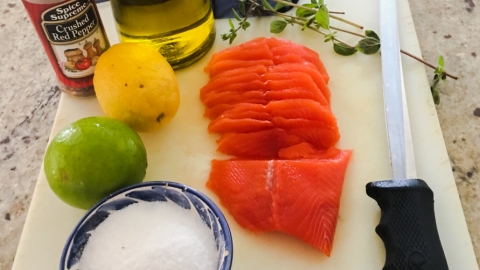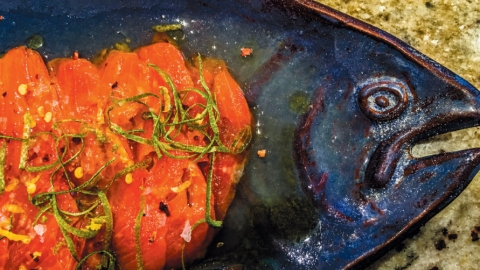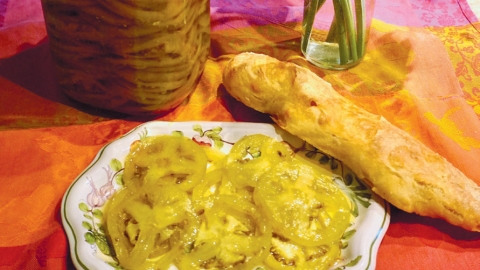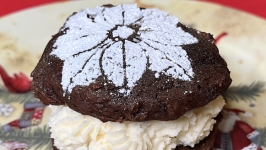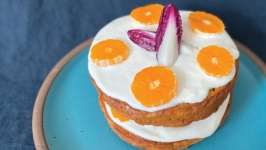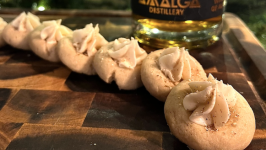Emergency
When I was kid in the 1960s, living in Western New York, my family often ate Sunday dinners at the home of my Sicilian grandparents. After each massive meal, my father and my uncles retreated to the living room couches to sleep off the tonnage of minestrone, pasta, chicken cutlets, and salad that my grandmother, whom we called Nani, had fed them. My six siblings and I, plus numerous cousins, worked off our meal by shrieking and running through the basement or out into the tomato garden.
It was a time of deafening family gatherings, and every memory seems to involve food. Nani often cooked the Old World peasant dishes my grandfather, Nano, pined for: the wonderful babalucci (land snails in tomato sauce), pig’s feet, fava beans, pasta en fagiole, and the succulent fried burdocks which we called cardoons. Even Thanksgiving—that most American feast day—was treated like a revered Italian holiday, a day on which, in honor of the pilgrims and their Indian friends, we ate homemade ravioli and braciole.
Though I lived with my parents in a leafy suburb near the Niagara River, sometimes I stayed overnight at Nani’s house in the old inner city neighborhood of two-family homes and crumbling corner stores. From Nani’s front porch I watched solemn, black-clad widows shuffle past on their way to light candles at St. Joseph’s Church. In the backyard, my grandfather’s tomato and zucchini plants stretched to the alley where frightening, shadow-faced men leaned on trash cans and shouted to him in their incomprehensible Sicilian dialect. When my Nani was not stuffing me with food, I spent hours on the squeaky metal porch glider reading library books about the Great North Woods where people lived in the forest, and birds and wild animals cavorted around their homes like woodland pets. I knew I wanted to live in Alaska one day.
In the early 1970s I was in my 20s, and a series of unwise decisions sidetracked my Alaska plans and dreams. A failure at college, with a wife and child to support, I worked as a house painter. Sometimes I stopped by to visit Nani, in the middle of the day. Nani—who might have stood five-feet-nothing in heels (and she didn’t own heels)—pushed me into a kitchen chair, announcing to no one in particular, “My No. 1 grandson has to eat something!” She hurled herself at the huge Frigidaire with the picture of the Blessed Virgin taped to the door, and started hauling out the comestibles: green olives, a nice provolone cheese, homemade chicken soup, leftover sausage and peppers, rigatoni in red sauce. And this was lunch.
I’d eat while she fluttered around the kitchen, a shrine to overeating, my Nani the high priestess at the Formica altar. In this religion the greatest sin was to be without food to offer an unexpected visitor. Her motto was, “Always keep a canned ham in the house. You know, in case of an emergency!” She was not talking about floods or hurricanes.
Finally, stomach bulging, I’d say, “Nani, I have to get back to work.” I’d push back from the table and stagger out the door, drive around the corner and park in the alley behind Sarecini Drug Store to sleep for half an hour on the front seat of my work truck before I could even think about climbing a ladder again that afternoon.
Now, half a century later, life is a lot quieter here in the Great North Woods than it was in those days when my brothers and sisters and cousins and I ran amok through a kitchen filled with cooking women. Although I do still cook a few of my Nani’s recipes, the local ingredients I use today are far removed from the items in her larder. But the ethnic ties are still visible in some of our favorite dishes: red salmon carpaccio, lingcod stimpirata, linguini with sauteed Cook Inlet razor clams.
Though we don’t keep a canned ham around, the freezer is filled with halibut and rockfish and king salmon fillets, spot prawns and Kodiak scallops; jars of home-canned sockeye line the shelves of the pantry. And I think that my Nani would be happy to know that, if—God forbid—unexpected dinner guests ever appear at our door, we will be prepared for that emergency.
Originally published in the Winter 2021 issue of Edible Alaska.






